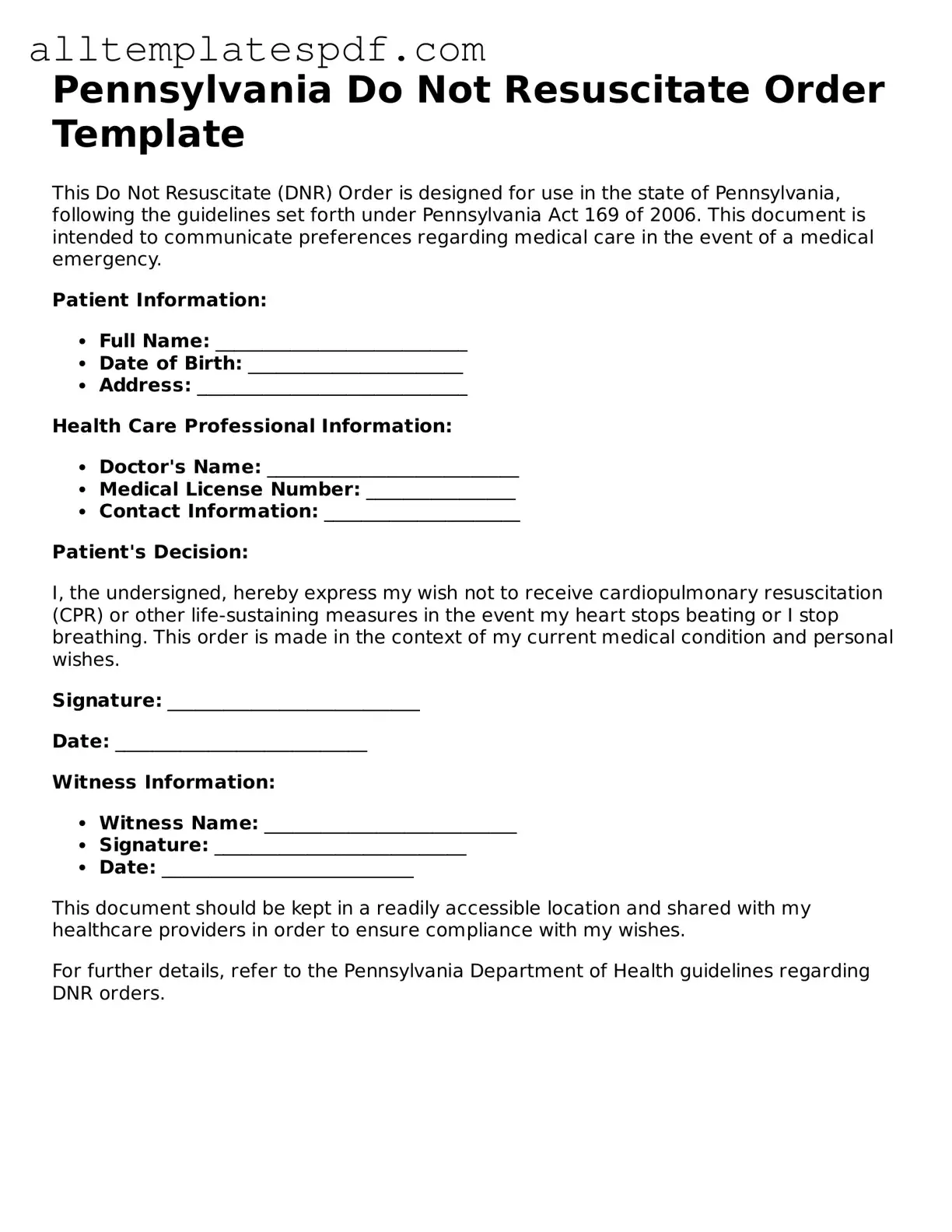Filling out a Do Not Resuscitate (DNR) Order form in Pennsylvania can be a critical step in ensuring that an individual’s healthcare preferences are respected. However, many people make mistakes during this process that can lead to confusion or unintended consequences. Understanding these common errors can help ensure that the form is completed correctly.
One frequent mistake is failing to discuss the DNR order with family members and healthcare providers. Open communication is essential. Without these discussions, loved ones may be unaware of the individual's wishes, leading to potential conflicts during a medical emergency. It is important to ensure that everyone involved understands the decision and its implications.
Another common error is not signing the form properly. In Pennsylvania, the DNR order must be signed by the patient or their authorized representative. If the signature is missing or incorrectly placed, the order may not be honored by medical personnel. It is crucial to double-check that all required signatures are present before submitting the form.
Additionally, individuals often neglect to date the DNR order. A dated form is essential for verifying its validity. Without a date, healthcare providers may question whether the order is current or if it reflects the individual's most recent wishes. Always include the date when completing the form.
Some people also make the mistake of not keeping copies of the DNR order. After completing the form, it should be distributed to relevant parties, including family members and healthcare providers. Keeping a copy in a readily accessible location can prevent confusion during emergencies when immediate decisions are required.
Lastly, failing to review and update the DNR order periodically can lead to issues. Life circumstances change, and so may an individual's wishes regarding resuscitation. Regularly reviewing the DNR order ensures that it accurately reflects current preferences and aligns with any changes in health status or personal beliefs.
